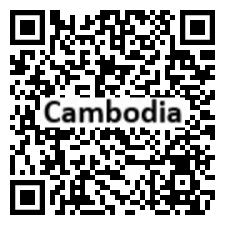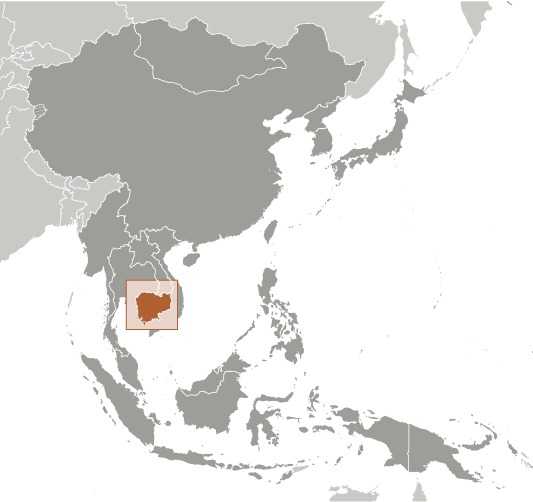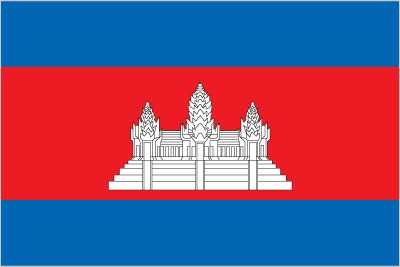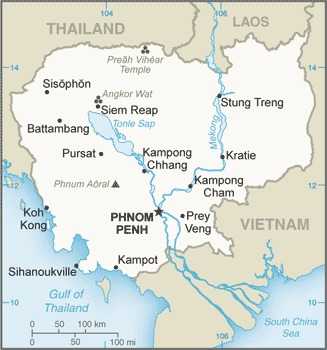Introduction
Background
Most Cambodians consider themselves to be Khmers, descendants of the Angkor Empire that extended over much of Southeast Asia and reached its zenith between the 10th and 13th centuries. After Japanese occupation in World War II, Cambodia gained full independence from France in 1953.
Geography
Area
total : 181,035 sq km
land: 176,515 sq km
water: 4,520 sq km
Climate
tropical; rainy, monsoon season (May to November); dry season (December to April); little seasonal temperature variation
Natural resources
oil and gas, timber, gemstones, iron ore, manganese, phosphates, hydropower potential, arable land
People and Society
Population
total: 17,063,669
Ethnic groups
Khmer 95.4%, Cham 2.4%, Chinese 1.5%, other 0.7% (2019-20 est.)
Languages
Khmer (official) 95.8%, minority languages 2.9%, Chinese 0.6%, Vietnamese 0.5%, other 0.2% (2019 est.)
Religions
Buddhist (official) 97.1%, Muslim 2%, Christian 0.3%, other 0.5% (2019 est.)
Population growth rate
0.99% (2024 est.)
Government
Government type
parliamentary constitutional monarchy
Capital
name: Phnom Penh
Executive branch
chief of state: King Norodom SIHAMONI (since 29 October 2004)
head of government: Prime Minister HUN MANET (since 22 August 2023)
Legislative branch
description: bicameral Parliament of Cambodia consists of:
Senate (62 seats; 58 indirectly elected by parliamentarians and commune councils, 2 indirectly elected by the National Assembly, and 2 appointed by the monarch; members serve 6-year terms)
National Assembly (125 seats; members directly elected in multi-seat constituencies by proportional representation vote; members serve 5-year terms)
Economy
Economic overview
one of the fastest growing economies; tourism and clothing exports; substantial manufacturing and construction sectors; COVID-19 declines and the suspension of EU market preferential access; massive reductions in poverty, but rural areas remain disproportionately poor
Real GDP (purchasing power parity)
$85.9 billion (2023 est.)
$81.499 billion (2022 est.)
$77.442 billion (2021 est.)
Real GDP per capita
$5,100 (2023 est.)
$4,900 (2022 est.)
$4,700 (2021 est.)
Agricultural products
cassava, rice, maize, sugarcane, vegetables, oil palm fruit, rubber, bananas, jute, pork (2022)
Industries
tourism, garments, construction, rice milling, fishing, wood and wood products, rubber, cement, gem mining, textiles
Exports
$27.753 billion (2023 est.)
$25.497 billion (2022 est.)
$20.178 billion (2021 est.)
Exports - partners
US 36%, Vietnam 10%, Germany 7%, Japan 5%, Canada 5% (2022)
Exports - commodities
garments, trunks and cases, footwear, cassava, shoes (2022)
Imports
$29.42 billion (2023 est.)
$34.759 billion (2022 est.)
$32.816 billion (2021 est.)
Imports - partners
China 30%, Thailand 19%, Singapore 18%, Vietnam 13%, Switzerland 3% (2022)
Imports - commodities
gold, refined petroleum, fabric, plastic products, vehicle parts/accessories (2022)
Exchange rates
riels (KHR) per US dollar -
Page last updated: Wednesday, July 24, 2024




